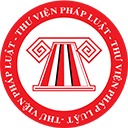in Vietnam, what are the regulations on implementation of relic repair?
What are the regulations on implementation of relic repair in Vietnam?
Pursuant to Article 16 of the Circular 15/2019/TT-BVHTTDL stipulating implementation of relic repair in Vietnam as follows:
1. Developers of relic repair projects shall:
a) Establish relic assessment boards and issue regulations on affairs thereof.
The board shall include the project developers, representatives of organizations preparing projects on relic repair, preparing design of relic repair drawings, carrying out relic repair, supervising execution of relic repair, representatives of Community investment supervision boards, representatives of Departments of Culture, Sports and Tourism, Departments of Cultures and Sports, representatives of organizations and individuals directly managing the relics and experts in relevant fields.
The board is responsible for examining results of activities specified in Clause 2 of this Article. Working results of the board shall be made into records.
b) Adjust and revise design of relic repair drawings (if any) as specified in Article 14 of this Circular.
c) Cooperate with Departments of Culture, Sports and Tourism and Departments of Culture and Sports in classifying and selecting valuable structural components that have severely deteriorated and become unusable to preserve and put on display at the relics or provincial museums.
d) Cooperate with organizations executing relic repair and relevant organizations and individuals in inspecting, transferring and bringing the relics into use, and implementing other activities according to construction laws.
2. Organizations executing relic repair shall:
a) In case of on-spot repair or dismantlement of some structural components:
- Cover areas of the structural components that are to be repaired to ensure safety;
- List signs of structural components on the drawings and mark structural components of the relics with corresponding signs. Signs marked on the structural components must not influence characteristics and value of the structural components, must be protected throughout the repair process and easily removed once finishing the repair. Take photos and record images after marking structural components with signs;
- Cooperate with developers, organizations providing design consultancy and Community investment supervision boards in confirming technical conditions of the structural components;
- Execute relic repair according to approved design of relic repair drawings.
b) In case of compulsory total dismantlement of structural components:
- Construct sheltering structures to serve repair of relics and storage to preserve structural components;
- List signs of structural components on the drawings and mark structural components of the relics with corresponding signs. Signs marked on the structural components must not influence characteristics and value of the structural components, must be protected throughout the repair process and easily removed once finishing the repair. Take photos and record images after marking structural components with signs;
- Deconstruct the relics as specified in Article 17 of this Circular;
- Cooperate with relic assessment boards in conducting research, assessing technical conditions of structural components, classifying and selecting valuable structural components that have severely deteriorated and become unusable to preserve and put on display at the relics or provincial museums;
- Execute relic repair according to approved design of relic repair, records of relic assessment board or approved documents on adjustment and revision of relic repair design.
3. Preservation of exhibits shall the carried out as specified in Point a (if necessary), Points b and d Clause 1 and Point a Clause 2 of this Article.
In Vietnam, what is relic deconstruction?
Pursuant to Article 17 of the Circular 15/2019/TT-BVHTTDL stipulating relic deconstruction as follows:
1. Relics shall be deconstructed only if all interior exhibits have been relocated or sheltered in place to ensure security and safety.
2. Before the deconstruction, structural components must be photographed, recorded in terms of images and marked according to list of signs on the drawings; prepare measures to deconstruct and areas for consolidation in the storage.
3. During the deconstruction, structural components located in such positions that pose risks of being destroyed must be temporarily protected and reinforced, and appropriate transport methods must be prepared.
4. After the deconstruction, structural components must be overall cleaned, classified and arranged in the storage.
5. Deconstruction process must be kept records of in (written, image, sound) forms and shall be a part of site diaries specified in Clause 2 Article 18 of this Circular.
Best regards!
Quý khách cần hỏi thêm thông tin về có thể đặt câu hỏi tại đây.
- Mấy giờ mở cổng đăng ký đánh giá năng lực HCM 2025? Khi nào mở cổng đăng ký ĐGNL HCM 2025?
- Kể về người anh hùng dân tộc Võ Thị Sáu lớp 3 ngắn gọn, hay nhất 2025?
- Tổng hợp mã địa điểm thi HSA 2025 mới nhất?
- Hướng dẫn đăng ký ca thi HSA 2025 mới nhất?
- Viết đoạn văn nêu lí do em yêu thích một câu chuyện về tình yêu thương hoặc lòng biết ơn lớp 4 hay, ngắn gọn?








